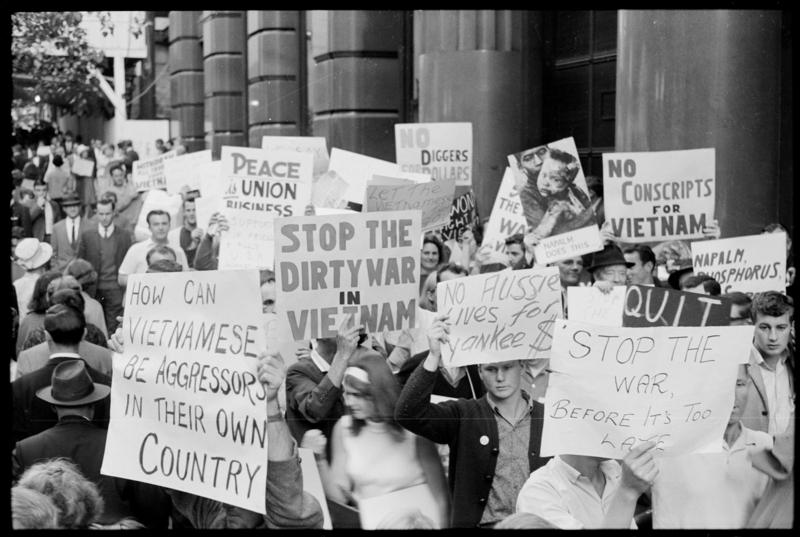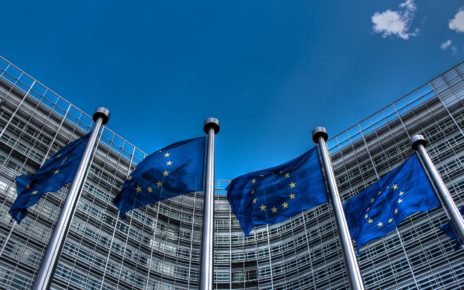During the Cold War, claims that the USSR was behind the 1960s Peace Movement and supporting it were legion. Although these claims have only been supported by shaky evidence at best and complete speculation at worst (PDF), Moscow’s potential incentive to support such a social movement is quite clear: the Peace Movement was destabilizing the United States from within and complexifying the pursuit of the U.S.’s preferred international agenda. The Vietnam War is perhaps the best example of the catastrophic consequences the shattering of public consensus through social opposition can have on the international aspirations of a state. In addition to imposing a humiliating defeat on America, for a number of years, its “free market democracy” and containment rationale was not enough to justify Washington’s international involvement.
It is not surprising then that Russia has been accused of supporting and encouraging social movements that weaken its adversaries. What has changed since the Cold War is the medium through which Russia can exercise its undue influence, especially in the dissemination of false and biased content. For instance, as it was thoroughly studied, the KGB spread the rumour that the CIA was to blame for the AIDS epidemic of the mid-1980s through an Indian media outlet in the hopes that the story would be picked up by international media and cause political damage. The story could not simply be propagated by a Russian source, it had to be ‘washed,’ if you will, by successive independent media to cover the trail. This particular operation was a public relations disaster for the CIA and the tracks between the bogus story and Moscow were blurred for years. It is impossible, however, to know how many similar fictitious stories were planted by the Russians, but never picked up by any significant media. The emergence of social media and its inclusion in the political and social sphere from the mid-2010s onward, however, gave Russia the opportunity to eliminate the successive random story transmission step and almost directly reach the American audience.
These steps are circumvented most often (as far as we know) by two means: trolls and Russian state media. The former is most often a group of accounts managed in a manner to promote Russia’s interests. For example, in March of 2020, a network of Russian-paid trolls were found in Africa operating a total of 205 Facebook, Instagram, and Twitter accounts. This nexus shared contentious stories about police brutality and racism aimed at an American audience. These two issues are closely linked to the Black Lives Matter social movement that rocked the United States this summer. Stories degrading this exact movement and questioning the idea of racial inequality in the US were also published. It is thus highly likely that the aim of these accounts was to pour oil on the fire and further polarize the American public around these contentious issues. The latter, Russian state media, are financed and controlled by Moscow to pursue its political objectives in the information field. The two most prominent such biased media outlets are RT (formerly Russia Today) and Ruptly. RT has been the subject of intense academic research and was found to circulate a pro-Kremlin and a pro-Putin narrative, absent of independent journalism. Once again, subjects pertaining to controversial social issues in the West, such as racial discrimination, and LGBTQ+ rights, are among their favourite topics.
Western democracies have taken steps to thwart Russia’s efforts by denouncing the clear link between the Kremlin and the content produced. For instance, in 2017, RT was forced by the U.S. Department of Justice to register as a foreign agent of the Russian Federation. In addition, measures were taken by social media platforms like Facebook and Twitter to remove trolls and give users information on the nature of the content they are viewing. Facebook clearly identifies RT as “Russia state-controlled media” on its platform. Nevertheless, the ultimate responsibility to evaluate content lies in the hands of the viewer since no one is in a better position to evaluate the narrative presented and how it might reflect the interests of the media. Viewers should ask themselves: what is the objective of this article? Why would this media outlet support or oppose this social movement? Does this media present a biased narrative regarding this movement? These kinds of questions are perhaps the best defence against Russia’s disinformation efforts to manipulate social movements.
Featured image: Anti-Vietnam War demonstration at Phillip Street Court, Sydney, NSW (1968), by The Tribune / SEARCH Foundation via Wikimedia Commons
Disclaimer: Any views or opinions expressed in articles are solely those of the authors and do not necessarily represent the views of the NATO Association of Canada.




